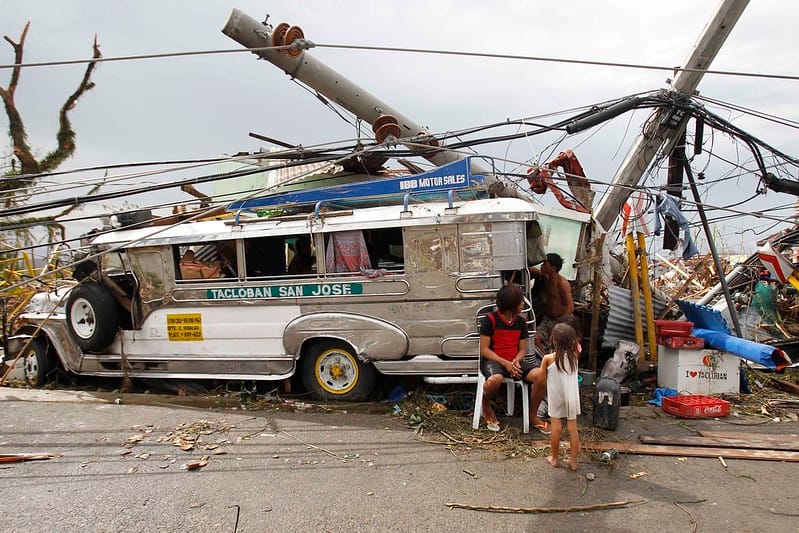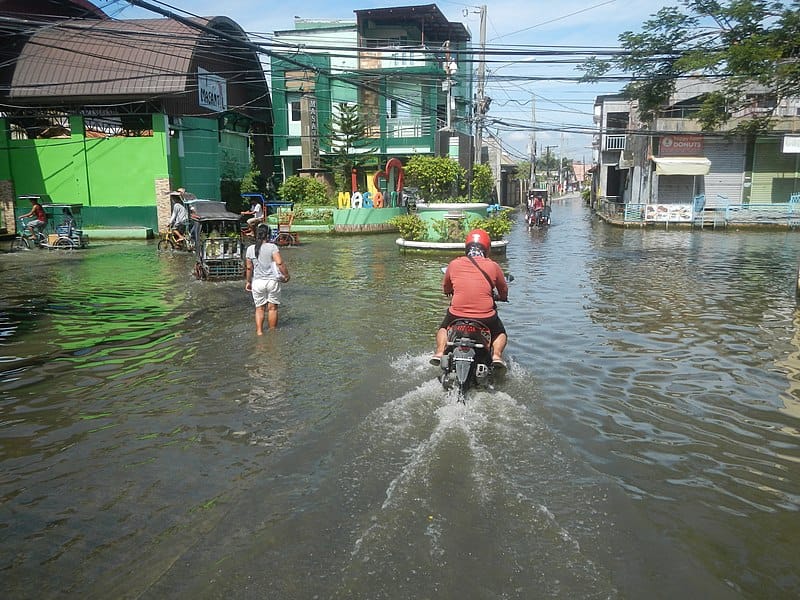Typhoons in the Philippines are a significant natural phenomenon that can greatly affect the experience of tourists visiting this beautiful archipelago. Known for its breathtaking landscapes and rich cultural heritage, the Philippines attracts countless travelers, especially to popular destinations like Coron in Palawan. However, the country’s geographical location places it in the path of tropical cyclones, making awareness of typhoon season essential for visitors.
In this article, we will explore the frequency and impact of typhoons in the Philippines, share crucial safety tips for travelers, and provide guidance on how to navigate potential storms, ensuring that your adventure in Coron remains safe and enjoyable.
Table of Contents
- Introduction
- Frequency of Typhoons in the Philippines
- How Typhoons are Measured
- The Most Devastating Typhoon in Philippine History
- The Latest Typhoon in the Philippines: Typhoon Julian
- Other Tropical Hazards in the Philippines and Coron
- Recommendations for Tourists During Typhoon Season
- Emergency Measures and Shelters in the Philippines
- Conclusion
1. Introduction:
Typhoons in the Philippines are natural phenomena that pose a significant challenge, not only for local residents but also for tourists looking to enjoy ideal destinations like Coron, known for its scenic beauty and water activities. This archipelago, located in the Pacific typhoon belt, experiences an average of 20 tropical cyclones each year, many of which can severely impact daily life and the infrastructure of communities. The typhoon season, which generally runs from June to November, coincides with the peak travel season, raising concerns for both visitors and tour operators.
Typhoons bring not only destructive winds and heavy rainfall but can also trigger flooding, landslides, and other natural disasters that disrupt tourist activities and pose risks to travelers’ safety.
Understanding the frequency and intensity of these cyclones is crucial for tourists to plan their trips safely and responsibly. Additionally, it is vital for visitors to be informed about safety measures and necessary recommendations to face any eventuality during their stay.
This article aims to address the frequency of these cyclones, their impact on communities and the tourism industry, and provide practical recommendations for travelers to enjoy a safe and memorable vacation in places like Coron, despite the potential challenges posed by typhoons. With the right information and adequate preparation, tourists can minimize risks and maximize their experience in one of the most beautiful destinations in the world..
2. Frequency of Typhoons in the Philippines
The Philippines is situated in the typhoon belt of the Pacific, experiencing around 20 tropical cyclones annually. The months of June to November are particularly active for typhoons in the Philippines, with the peak occurring from August to October. During this period, about 5 to 6 typhoons make landfall, significantly impacting coastal regions like Coron, Palawan.
Typhoons in the Philippines vary in intensity and frequency, but their occurrence is a constant reality for the nation. Each year, the Philippine Atmospheric, Geophysical and Astronomical Services Administration (PAGASA) monitors these typhoons, providing essential data for both residents and visitors. The unique geographical features of the Philippines, including its mountainous terrain and vast coastline, influence the path and strength of typhoons in the Philippines.
3. How Typhoons are Measured
Typhoons in the Philippines are classified based on wind speed and atmospheric pressure using the Joint Typhoon Warning Center (JTWC) scale and the Saffir-Simpson Hurricane Wind Scale. The classification system categorizes storms into five categories, with Category 1 being the least intense (winds of 74-95 mph) and Category 5 being the most severe (winds exceeding 157 mph). This classification helps authorities issue alerts and take preventive measures to safeguard the population and visitors during typhoons in the Philippines.
Meteorologists utilize satellite imagery, radar technology, and meteorological data to track the development and movement of typhoons in the Philippines. This information is crucial for predicting potential landfall locations and the associated risks, such as flooding and landslides.
The measurement of rainfall intensity is also essential, as heavy rain can exacerbate the effects of strong winds during typhoons in the Philippines, leading to dangerous conditions.
4. The Most Devastating Typhoon in Philippine History

Typhoon Haiyan, known as Yolanda, was the most devastating in recent history, hitting the Philippines in November 2013 with winds of up to 315 km/h (195 mph). It made landfall in Eastern Samar and caused extensive damage throughout the Visayas region, including Leyte and Tacloban City.
The destruction left behind by Typhoon Haiyan highlighted the need for preparedness and response to such natural disasters, emphasizing the impacts of typhoons in the Philippines..
5. The Latest Typhoon in the Philippines: Typhoon Julian
In October 2024, Super Typhoon Julian impacted northern Philippines, generating strong winds and torrential rains. Although Coron was not directly affected, preventive evacuations were implemented, and authorities urged tourists to stay informed through PAGASA alerts about typhoons in the Philippines. Julian was characterized by winds reaching up to 220 km/h (137 mph) and heavy rainfall that caused flooding in several areas of Luzon.
6. Other Tropical Hazards in the Philippines and Coron
In addition to typhoons in the Philippines, the country faces other hazards such as tropical storms, depressions, and monsoon rains. These weather events can also lead to flooding, landslides, and disruption of travel plans.
During the southwest monsoon (Habagat), which typically occurs from June to September, heavy rainfall can cause significant impacts, especially in low-lying areas.
7. Recommendations for Tourists During Typhoon Season
For visitors during the typhoon season in the Philippines, it is recommended to:
- Avoid peak typhoon season: If possible, plan your travels outside of the most dangerous months. The safest months to visit Coron are typically December to May when typhoons in the Philippines are less likely.
- Check forecasts: Regularly consult PAGASA weather reports and local news outlets for updates on typhoon developments.
- Have travel insurance: Ensure your travel insurance covers cancellations due to natural disasters like typhoons in the Philippines.
- Follow local alerts: Stay informed about conditions and heed instructions from authorities, including evacuation orders if issued.
- Please read our FAQ’s for more info.
8. Emergency Measures and Shelters in the Philippines

The Philippine government has measures in place for emergencies, including evacuation centers and supply kits. Tourists should be aware of the location of shelters during typhoons in the Philippines and be prepared with a basic kit that includes water, food, and important documents.
9. Conclusion
Traveling to Coron in the Philippines during the typhoon season requires adequate preparation and precautions. The unpredictable nature of tropical cyclones can turn a well-planned vacation into a challenging experience, but understanding the risks and taking proactive steps can significantly enhance safety and enjoyment.
While typhoons in the Philippines pose a risk, tourists can still immerse themselves in the wonders of this tropical paradise by adopting a proactive approach to their travel plans. This includes staying informed about weather conditions, being flexible with itineraries, and knowing evacuation routes and local emergency procedures. Engaging with local guides who understand the region’s climate can also provide invaluable insights, ensuring that visitors can navigate their adventures safely and effectively.
Typhoons pose a significant risk with just about every aspect of life in the Philippines. Nothing can be more true than the 3 day boat expeditions between El Nido and Coron or visa versa. Imagine being stuck in the midlle of no where on a deserted island. Yes, typhoons disrupt expeditions. Green Gecko always puts safety first. Any sign of a typhoon a week before the expedtion usually means an instant, automatic cancelation. When this happens, all boats including bigger ferries are cancelled.. When large ferries are cencelled, the price of air travel doubles or triples. You either pay extra to leave the area or sit through the storm.
Additionally, tourists should consider travel insurance that covers natural disasters, which can provide peace of mind and financial protection against unforeseen circumstances. It’s equally important for travelers to familiarize themselves with the hospitality sector’s preparedness for typhoons, as many resorts and tour operators have established protocols in place to ensure guest safety during adverse weather events.
With the right information and a preventive approach, Coron and its stunning tropical landscapes will continue to be an attractive destination to explore. The beauty of the region—characterized by crystal-clear waters, lush greenery, and vibrant coral reefs—remains intact, regardless of the season. By embracing the unique experiences that Coron offers and remaining adaptable, travelers can discover the captivating charm of this island paradise, even amid the challenges posed by typhoon season. Ultimately, with careful planning and awareness, the enchanting allure of Coron will not only survive the storms but will also create lasting memories for those willing to embrace the adventure.